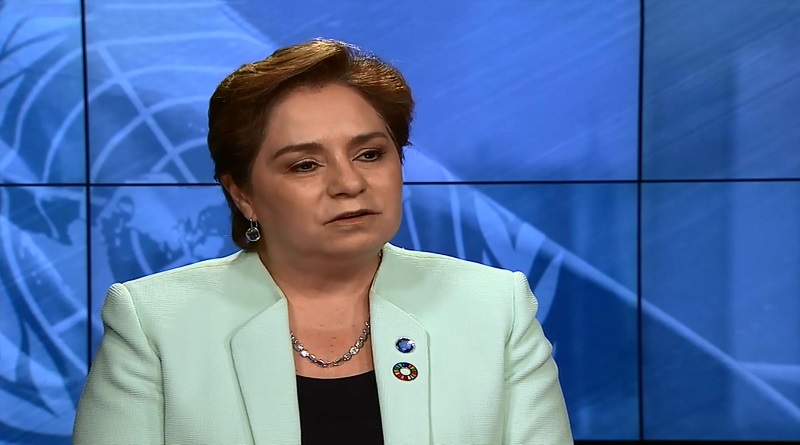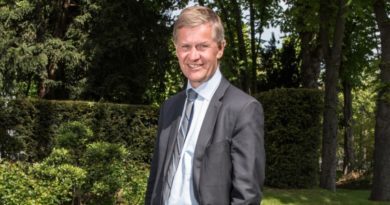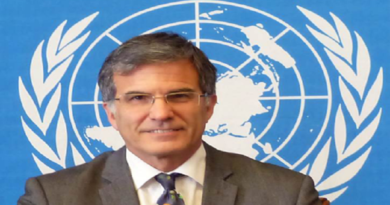Without local action, we’ll not accomplish our global goals-UN climate chief
The United Nations Framework Convention on Climate Change (UNFCCC) Executive Secretary, Patricia Espinosa, has said that without local action, in every region and every continent of the world, it would be difficult to achieve the global goals of sustainable development, reducing green house gas emissions and implementing the Paris Agreement.
Espinosa, in her speech at the second Climate Change Summit of the Americas on 31 August to 1 September, emphasised that the support cities and states played in securing the Paris Agreement last December, the same support embodied by commitment and action on the ground can help national governments write the rules that will make the agreement work as nations look towards Marrakech in November.
Below is the speech she delivered at the UN second climate change summit of the Americas.
As we approach COP 22 in Marrakech, three certainties have come into sharp focus. These certainties must guide our conversation regarding how we take forward the agreements reached last year – the Sendai Framework for Disaster Risk Reduction, the Sustainable Development Goals and, of course, the Paris Climate Change Agreement.
First, we are certain that there is only one possible global development plan and it is sustainable. All action to address climate change is an essential, inseparable and integrated part of that global development plan. Climate action that incentivizes the shift to this new development path, whether it is clean energy, energy efficiency, adaptation or education, is the foundation for the future well-being of all people.
Rapidly reducing the greenhouse gas emissions that drive climate change and building resilient societies to cope with climate impacts protects lives and livelihoods, improves public health, creates new industries and sustainable farming, cuts costs for governments, business and citizens and raises stable investment returns.
Second, it is certain that it is the responsibility of national governments to incentivize the shift onto this new development path. The Paris Agreement, reached by countries under the UN Framework Convention on Climate Change, sets a clear path to keep the world within safe temperature limits and opens the way to respond more boldly than ever to the climate challenge.
In Paris, the world made a historic leap towards a sustainable future where humanity’s greenhouse gas emissions are removed as an existential threat to civilization. After Paris, no politician or citizen, no business manager or investor can doubt that the transition to a low-carbon society and economy, resilient to the impacts of climate change, is the determination of the community of nations.
The third certainty – and the one that is perhaps the most germane to our discourse today – is that national governments simply cannot by themselves reduce of emissions at the unprecedented rates needed to achieve key milestones made under the Paris Agreement.
Subnational governments – cities, states, provinces and the partnerships that exist among these groups – need to align local action with the Paris Agreement. Business, academic and civil society communities need to be active in the shift to a new kind of development. Without local action – in the Americas and in every region on every continent of the planet – we will not accomplish our global goals.
We have the certainty to understand what it will take to accomplish our global goals – a steep decline in greenhouse gas emissions and building up of resilience. And we have the certainty to understand what is at stake – a future where growth is sustained over generations.
However, there still remains a lack of certainty regarding the next steps each group should take. Today, I would like to share my own vision of the crucial next steps for national governments, for subnational governments and for the private sector.
For national governments, the next steps should include ratification and rules. We are hopeful that those who committed to ratify the Paris Agreement this year do so and the Agreement enters into force early. There is no better way to demonstrate that governments understand and accept the responsibility agreed in Paris. There is no better path to the necessary policy solutions than a legally-binding commitment to each country’s nationally determined contribution.
With early entry into force a very real possibility, finalizing the rulebook that determines how the Paris Agreement will work is crucial. The upcoming UN Climate Change conference in Marrakech is the opportunity to further clarify the rules. These rules will spell out how support is provided to the developing world, how adaptation is elevated and how we will measure, report and verify both emission reductions and our progress towards the goals of the Paris Agreement.
For governments at the state and local levels, the next steps are to align with the national goals in your country’s contribution to the Paris Agreement. Immediate action can bring your local growth in line with global goals. As governments discuss the rules, they need to know that their commitments on climate are possible in the policies and practices of the cities and states that power their country’s growth. Partnerships between nations are more easily built on a foundation of regional partnerships.
We should build those partnerships across regions and among cities. We should build cleaner power generation systems that tap the cost free fuels of wind and solar energy. We should invest in resilient infrastructure at the community level, knowing that the benefits outweigh any minimal extra upfront costs. We should invest in efficient and low-emission transportation, agriculture and industry. We should sustainably manage land, water and waste to ensure access and adequate supply for all.
Cities and states and regions – those who serve local communities – have an increasing number of resources to accomplish these transformative actions. And you are often working hand in hand with businesses large and small. These actions open opportunity in new and growing markets, where competitiveness and prosperity are often found on the path to sustainability and lower emissions.
For the private sector – business and investors – the next step should be to determine how to accelerate this transformation and capitalize on this opportunity. In this transformation of the economy, there is a resistance to change by some, yes, but there is also at the same time opportunity for many, many more.
When more businesses evaluate their business plans for carbon footprint, resilience to impacts and sustainability of supply, more businesses will see these opportunities. When more investors analyze their portfolios, stress test their assets and look at financial products like green bonds and solar PPEs, more will see the value of climate responsible investment.
We have the certainty needed to act. I believe the climate change Summit of the Americas is where any uncertainty regarding your own next steps can be resolved.




